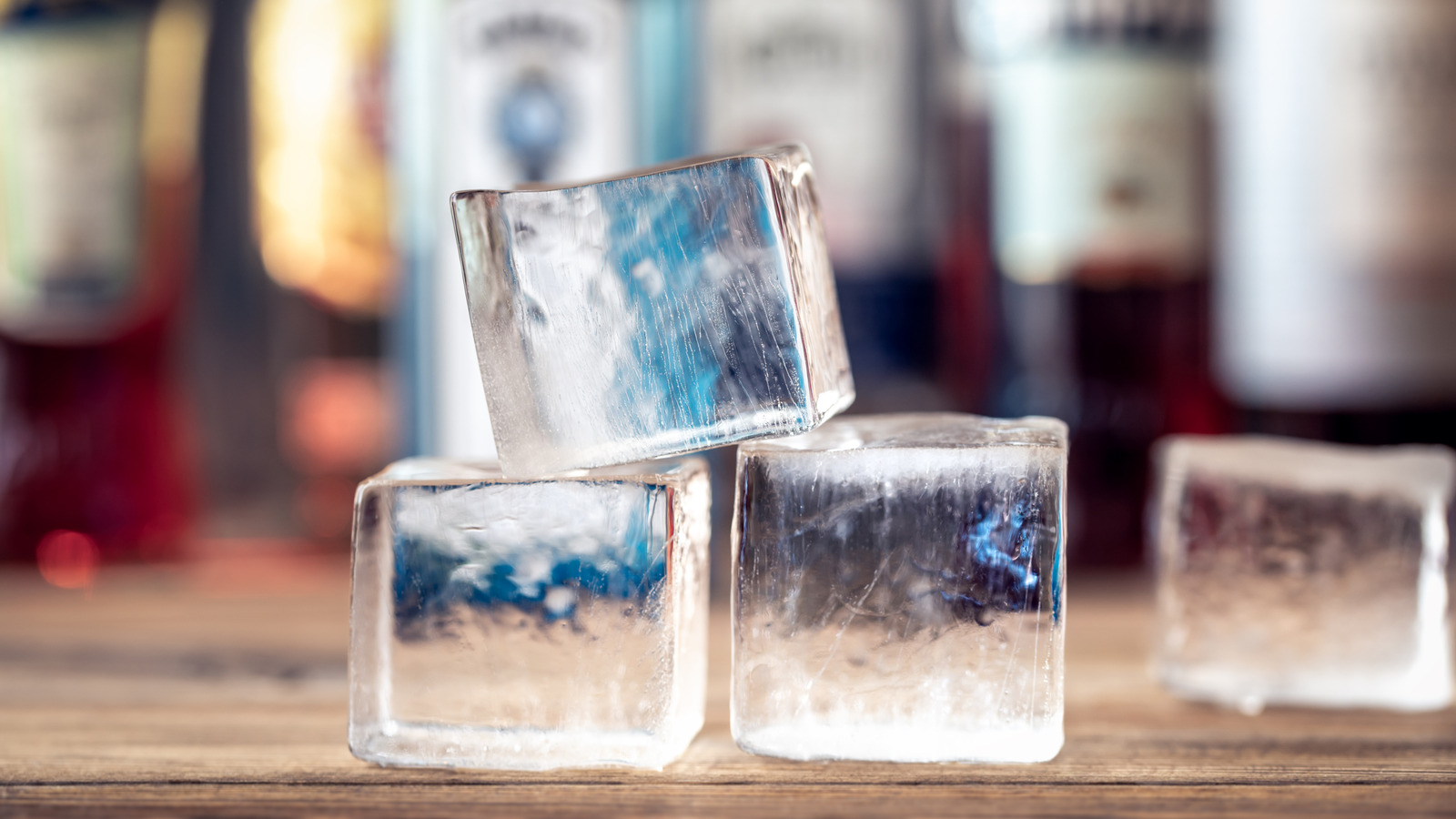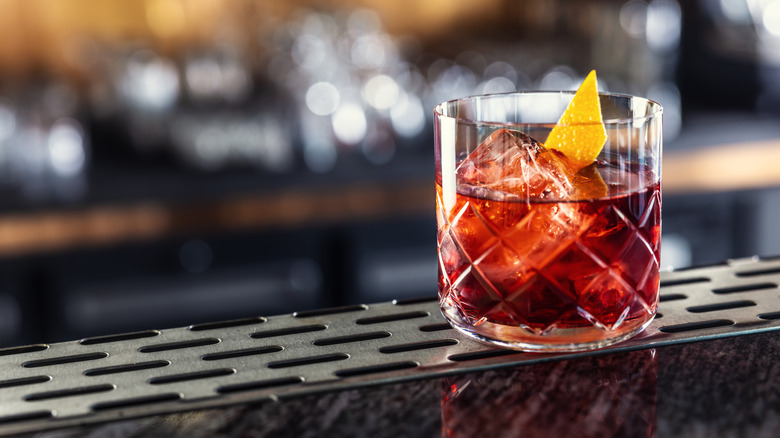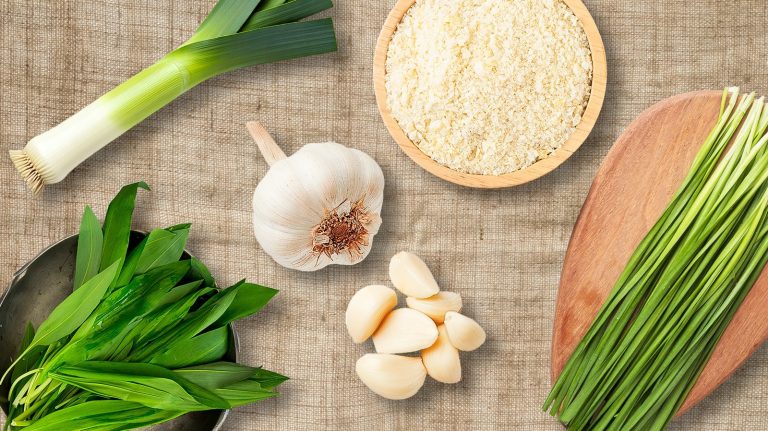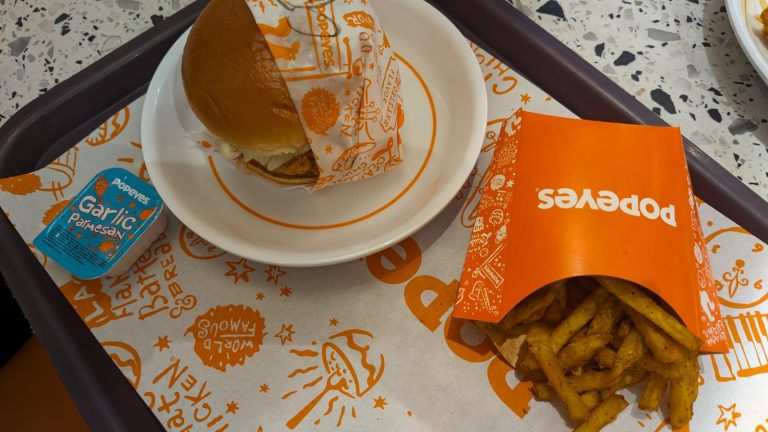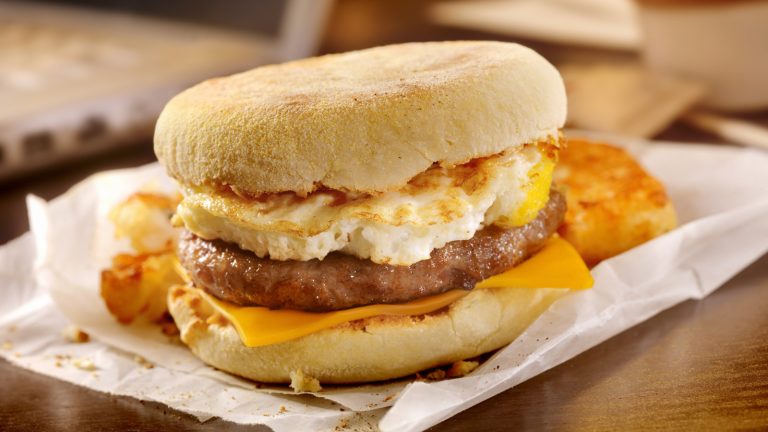We may receive a commission on purchases made from links.
“Whiskey. Rocks.” How many times have you heard those words uttered when someone walks up to a bar in a movie or television show? Do you ever stop to think exactly what kind of rocks — that is, ice — are being used for that drink? Chowhound spoke exclusively with Lexi Parker, lead bartender at Denver’s Poka Lola Social Club, about all things “ice,” and according to her, you absolutely should. The size and shape of your ice impacts how quickly it will dilute the cocktail, and that will impact its flavor.
The type of ice used for cocktails depends on the type of cocktail, the size of the glass, and whether your drink will be shaken or stirred. You also need to consider whether it’s the type of drink that will be downed quickly or sipped over time. Also, since dilution is one of the functions of ice in cocktails, it matters how quickly and how much you want the drink to dilute. For example, you should think twice before using nugget ice versus cubed ice in cocktails. Parker agrees. “Larger pieces of ice dilute more slowly than smaller pieces,” she explains. Bartenders tend to use larger cubes for stronger drinks and for those you’re more likely to sip slowly and will want to keep cold for a longer period of time.
“You’ll need to adjust the amount of time you shake or stir a drink depending on the type of ice it sits on,” Parker adds. If you are using smaller pieces of ice — and, like James Bond, prefer your martinis shaken, not stirred — don’t shake it for too long, or you’ll risk diluting your drink before it’s even poured.
Size (and the shape of the glass) matters
Lexi Parker says that the shape and size of the glass is also an important consideration. “Some glasses lend themselves better to pebble ice, and of course you can’t always fit a large cube of ice in certain glasses.” Larger cubes and spheres, for example, won’t fit into Collins or highball glasses and are better suited to rocks glasses.
Another factor is the type of drink. “A fruity, tropical rum baddie is much more likely to be served on pebble or crushed ice than a stirred drink like an old fashioned or Negroni,” Parker explains. Other drinks she’d serve with pebbled ice include a Jungle Bird or Mai Tai, while she’d use cubes for a boulevardier or a Vieux Carré. Some bartenders, she notes, are using long sticks of ice for Collins-style cocktails.
Another thing to note is that restaurants and bars tend to use clear ice. Clear ice looks cleaner and elegant in a glass but it also melts more slowly than the cloudier ice likely produced by your freezer. Although special equipment or ice vendors are used in commercial settings, there are ways to produce clear ice at home. Clearly Frozen’s Clear Ice Tray, for instance, is made specifically for that purpose. Making spheres with a Glacio Clear Ice Ball Maker is another ice trick home bartenders should learn.
With ice so important for maintaining a drink’s perfect taste and flavor, it’s hard to believe that people didn’t start regularly using it in their cocktails until the 1830s. Then, it had to be produced in colder climes and transported to hotter locales. Thankfully, we no longer need to wait for the iceman to cometh.


